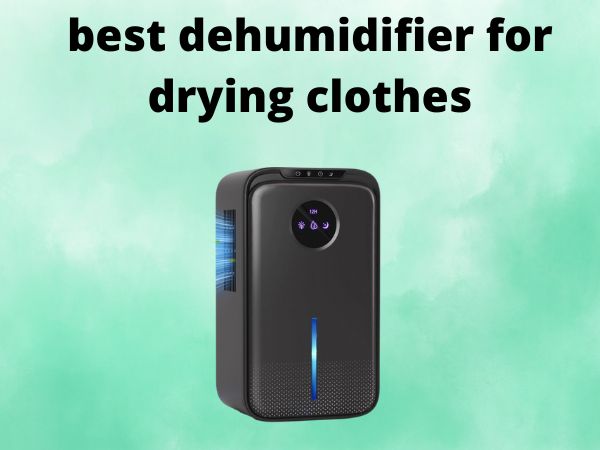How Does a Whole Home Dehumidifier Work?
Have you ever walked into a room and felt like the air was thick and heavy, making it difficult to breathe? Chances are, you were dealing with high humidity levels. Excess moisture in the air can create an uncomfortable and even unhealthy living environment. That’s where a whole-home dehumidifier comes in – a powerful and efficient solution to manage the humidity levels throughout your entire house.
But how exactly does a whole-home dehumidifier work? In this comprehensive guide, we’ll dive into the inner workings of these remarkable appliances and help you understand why they’re an essential investment for maintaining a comfortable and healthy home.
Table of Contents
The Science Behind Whole-Home Dehumidifiers
At its core, a whole-home dehumidifier operates on the principle of condensation. Just like a cold glass of water on a hot day, these devices use a refrigeration system to cool the air, causing the excess moisture to condense and be collected in a storage tank or drained away.
The process typically involves the following steps:
- Air Intake: The dehumidifier draws in warm, humid air from the surrounding environment using a fan or blower.
- Cooling Coils: The air passes over a set of cold coils, similar to those found in a refrigerator or air conditioner. These coils cause the water vapor in the air to condense, forming droplets.
- Condensate Collection: The condensed water is then collected in a tank or drained out of the unit, removing the excess moisture from the air.
- Dehumidified Air Circulation: The now-drier air is then circulated back into the room or home, helping to regulate the humidity levels.
The efficiency of a whole-home dehumidifier is largely determined by its ability to remove moisture from the air and maintain a comfortable humidity range, typically between 30-50%.
Key Components of a Whole-Home Dehumidifier
To understand how a whole-home dehumidifier works, it’s important to familiarize yourself with its main components:
Compressor
The compressor is the heart of the dehumidifier, responsible for circulating the refrigerant and creating the cooling effect necessary for condensation. It’s similar to the compressor found in a refrigerator or air conditioner.
Condenser Coil
The condenser coil is the part of the dehumidifier where the refrigerant gas is cooled and condensed back into a liquid. This process releases heat, which is then blown out of the unit by a fan.
Evaporator Coil
The evaporator coil is where the magic happens – it’s the part of the dehumidifier that gets cold, causing the moisture in the air to condense and be collected.
Fan
The fan is responsible for drawing in the warm, humid air from the surrounding environment and blowing the dehumidified air back into the room or home.
Condensate Drain or Tank
The condensate drain or tank is where the collected moisture is stored or directed out of the dehumidifier, preventing it from being reintroduced into the air.
Benefits of a Whole-Home Dehumidifier
Investing in a whole-home dehumidifier can provide a range of benefits for your living space and overall well-being:
- Improved Indoor Air Quality: By removing excess moisture from the air, whole-home dehumidifiers can help reduce the growth of mold, mildew, and dust mites, which can trigger allergies and respiratory issues.
- Enhanced Comfort: Maintaining optimal humidity levels can make your home feel more comfortable and pleasant, especially during hot and humid weather.
- Reduced Energy Costs: Dehumidifiers can actually help your air conditioning system work more efficiently, as it doesn’t have to work as hard to cool the air when the humidity is lower.
- Preserves Household Items: Excess moisture can damage furniture, electronics, and other household items. A whole-home dehumidifier helps protect your investments by controlling the humidity levels.
Conclusion
A whole-home dehumidifier is a powerful and efficient appliance that can make a significant difference in the comfort and health of your living space. By understanding how these devices work, you can make an informed decision about investing in one and enjoy the many benefits they provide.
FAQs
What is the ideal humidity level for a home?
The ideal humidity level for a home is typically between 30-50%. Anything above 50% can promote the growth of mold, mildew, and dust mites, while levels below 30% can cause dry skin, static electricity, and other issues.
How do I know if I need a whole-home dehumidifier?
If you notice excessive condensation on windows, musty odors, or an overall feeling of dampness in your home, it’s a good indication that you may need a whole-home dehumidifier to regulate the humidity levels.
How often do I need to empty the dehumidifier’s water tank?
The frequency of emptying the water tank will depend on the size of the unit, the humidity levels in your home, and how often the dehumidifier is running. Most whole-home dehumidifiers will need to be emptied every few days to a week, but it’s important to check the manufacturer’s recommendations.
Can a whole-home dehumidifier also cool my home?
While whole-home dehumidifiers can help make your home feel more comfortable by reducing humidity, they are not designed to provide cooling like an air conditioner. If you’re looking to both cool and dehumidify your home, you may want to consider a unit that combines both functions.
How much energy does a whole-home dehumidifier use?
The energy consumption of a whole-home dehumidifier can vary depending on the size of the unit and its efficiency rating. However, many modern dehumidifiers are designed to be energy-efficient, helping to keep your utility bills manageable while still providing effective humidity control.

